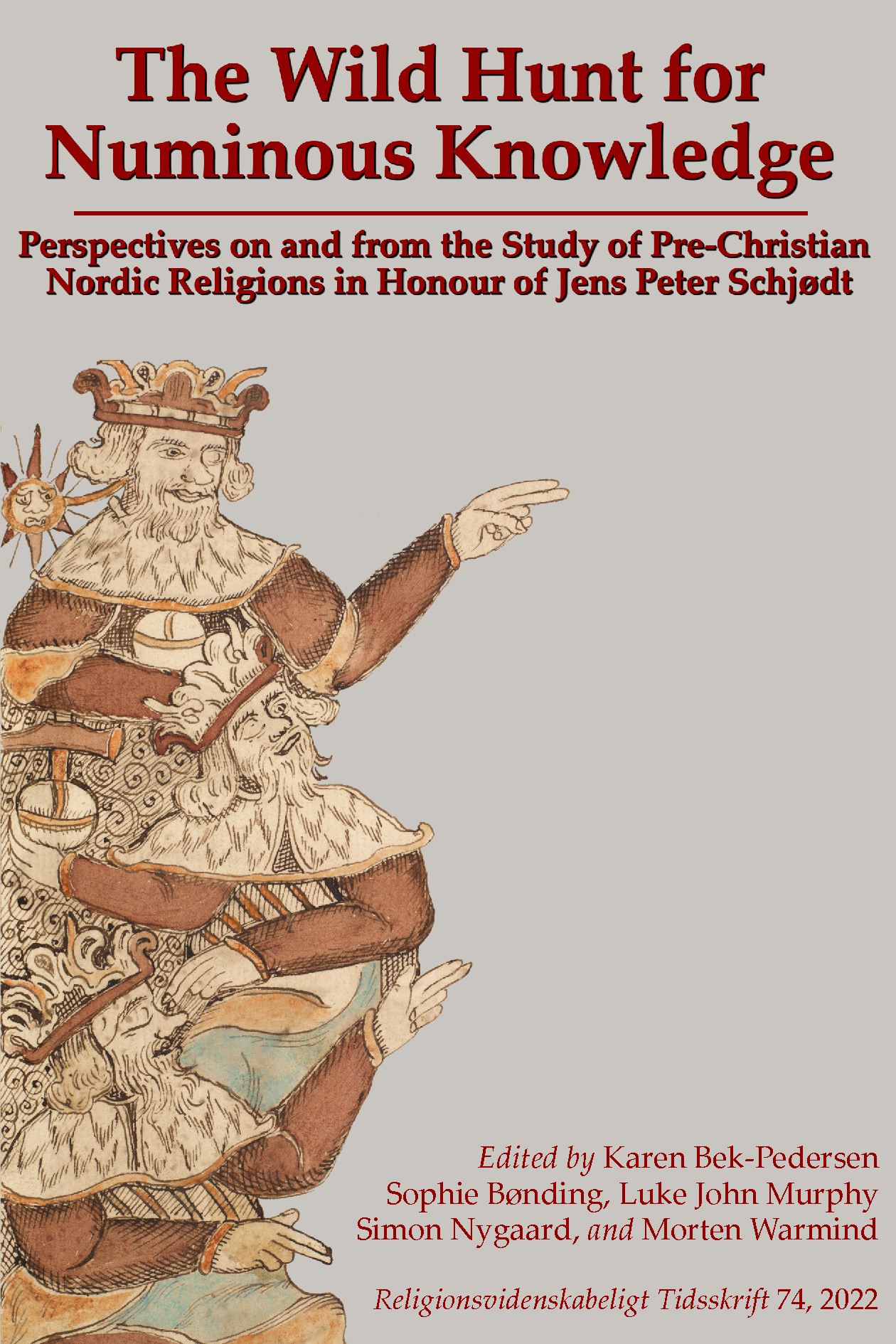Puruṣa: Offer, kosmos, menneske
DOI:
https://doi.org/10.7146/rt.v74i.132127Nøgleord:
Puruṣa hymn, Ymir, comparativism, genetic comparison, sacrifice, Vedic religionResumé
ABSTRACT: Because of the problematic source situation in the pre-Christian North, it is often necessary to make us of what Jens Peter Schjødt has termed genetic comparisons, in order to better ones understanding of the religious tradition. In this article, one such historically related myth about the creation of the world through a ritual process in which an anthropomorphic being if transformed into the cosmos through an act of sacrifice, is anlalysed. This myth is known in the Old Norse material as the myth of the jǫtunn Ymir and in the Indian material as the myth of Puruṣa. It is the latter which, through the well-known hymn from the Ṛgveda, forms the basis of an analysis focussing on how this myth establishes a mode of sacrifice which connects the primeval cosmogony with the existence of gods and life of humans in a perspective which reaches into and beyond death.
RESUME: Grundet den mangelfulde kildesituation til det førkristne Norden er det ofte nødvendigt at benytte sig af hvad Jens Peter Schjødt har kaldt genetiske komparationer, for at danne sig et bedre billede af den religiøse tradition. I denne artikel analyseres en sådan historisk beslægtet myte, nemlig myten om verdens skabelse gennem en rituel proces, hvor et antropomorft væsen gennem en offerhandling transformeres til kosmos. Denne myte kendes i det norrøne materiale som myten om jætten Ymir og i det indiske materiale som myten om Puruṣa. Det er sidstnævnte, der, gennem den kendte hymne i Ṛgveda, danner grundlag for en religionshistorisk analyse med fokus på, hvordan denne indiske myte indstifter en offertanke, der forbinder urtidens verdensskabelse med guders og menneskers liv og eksistens i et perspektiv, der rækker ud over og ind i døden.
Downloads
Publiceret
Citation/Eksport
Nummer
Sektion
Licens
Alt publiceret materiale i RvT fra og med nr. 75 (2023) er underlagt en CC BY 4.0 licens, og forfatteren har ophavsretten dertil.
Forfatteren og RvT deler ophavsretten til materiale publiceret inden nr. 75





